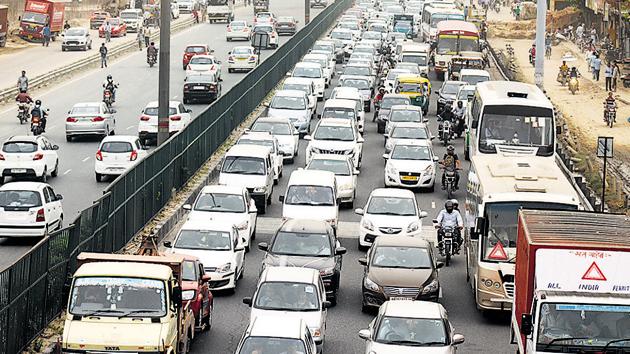Why Haryana requires a unified metropolitan transportation body
The transport department is also supposed to look at the development of public transport in cities, but the regional transport authority is mostly involved in issuing licences to drivers and granting permits for vehicles. The result is that the city continues to suffer from the lack of a good public transport.
Urban transport is constitutionally challenged and institutionally orphaned. The statement may sound dramatic but in reality, it isn’t and that’s the root cause of why our cities are grid locked. Let me explain.

Modes like Railways, national highways, national waterways, aviation, etc, fall in the Constitution, union list, where only central government can make rules. Non-motorised transport, such as walking and cycling, which are integral parts of any city’s mobility, come under List II, hence, only state can make rules. The concurrent list includes motor vehicles, where both central and state governments can make rules. In addition, there are numerous ministries and departments that are involved in urban transport function, in some form or the other. Therefore, urban transport is everyone’s, yet no one’s baby.
For an efficient transportation system, cities need to address three key aspects. The first is the planning for mobility needs, second is the regulatory aspect such as licensing, fare, permits, etc, and the third is the execution of the projects. Now, let’s look at how these functions happen in our city.
First, there is a lack of integrated planning for mobility needs. For example, agencies such as the municipal corporation, development authority, industrial development corporation, private developers, etc, all plan road infrastructure but for their ‘own’ area, without understanding the impact of these project at a city level. An example for the same would be the flyover at Subhash Chowk, on which crores were spent, but has hardly been utilised at all.
The second issue is of priority. For example, the transport department is also supposed to look at the development of public transport in cities, but the regional transport authority is mostly involved in issuing licences to drivers and granting permits for vehicles. The result is that the city continues to suffer from the lack of a good public transport.
Last but definitely not the least is the issue of coordination, for example Delhi Metro looks at connecting Gurugram to Delhi and is very good at transporting passengers from one platform to the other, but the concern of how anyone will reach the station is nobody’s business and a classic example is the Huda City Center Metro Station, where one foot overbridge ends before the Metro wall and other starts after the wall.
The solution to this lies in creating an agency responsible for the overall mobility needs and which includes all modes, something like a Unified Metropolitan Transport Authority or UMTA.
The idea of UMTA is like what London has as Transport for London or TFL, which does all the mobility planning for all modes of travel i greater London and also manages funding for all the mobility projects in the region, be it metro, buses or even cycles. The respective agencies are held responsible for the execution of the projects. The biggest take away from the TFL structure is that it is really powerful as it directly reports to the mayor of London.
Ideally, the UMTA needs to be regional and should include Delhi, Noida, Ghaziabad, Faridabad, Sonipat, etc, because transportation is not restricted to an administrative boundary. However, given the political feasibility, it is more implementable to create an UMTA for Gurugram, Manesar and Faridabad region and it should include all the relevant departments responsible for transportation in this area.
UMTA should plan and monitor for an integrated mobility of various modes of transport in the region, focussing on neglected aspects, such as walking and cycling, road safety, street infrastructure, etc.
It should also be responsible for regulating parking, taxations, fares, etc. UMTA should also coordinate with other authorities like railways, Metro, civil aviation, etc, so as to provide an integrated and seamless transport to the residents.
However, it is easier said than done because this will require various departments to give up their powers and functions and report to a new agency, which will be onerous. But desperate times call for desperate measures and without this, we will continue to invest in half hearted, disjointed projects in the city without moving forward.
Amit Bhatt is Director- Integrated Transport, WRI India
Stay updated with all the Breaking News and Latest News from Mumbai. Click here for comprehensive coverage of top Cities including Bengaluru, Delhi, Hyderabad, and more across India along with Stay informed on the latest happenings in World News.
Stay updated with all the Breaking News and Latest News from Mumbai. Click here for comprehensive coverage of top Cities including Bengaluru, Delhi, Hyderabad, and more across India along with Stay informed on the latest happenings in World News.






